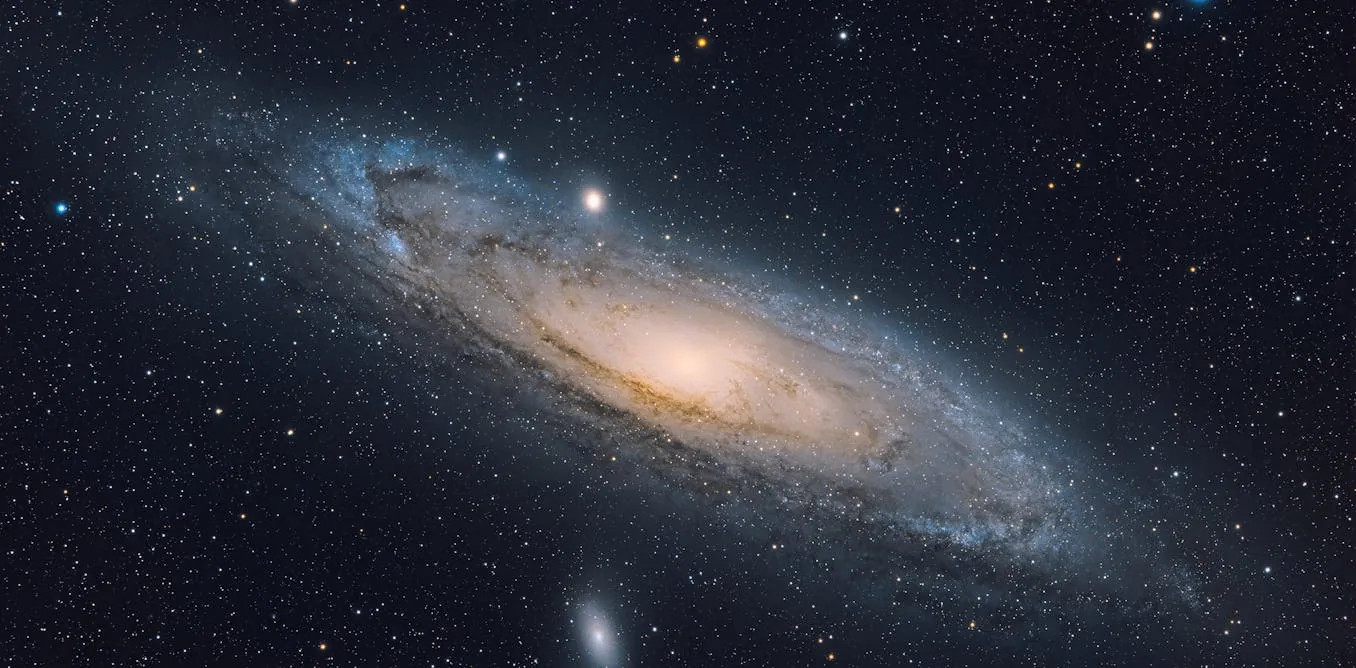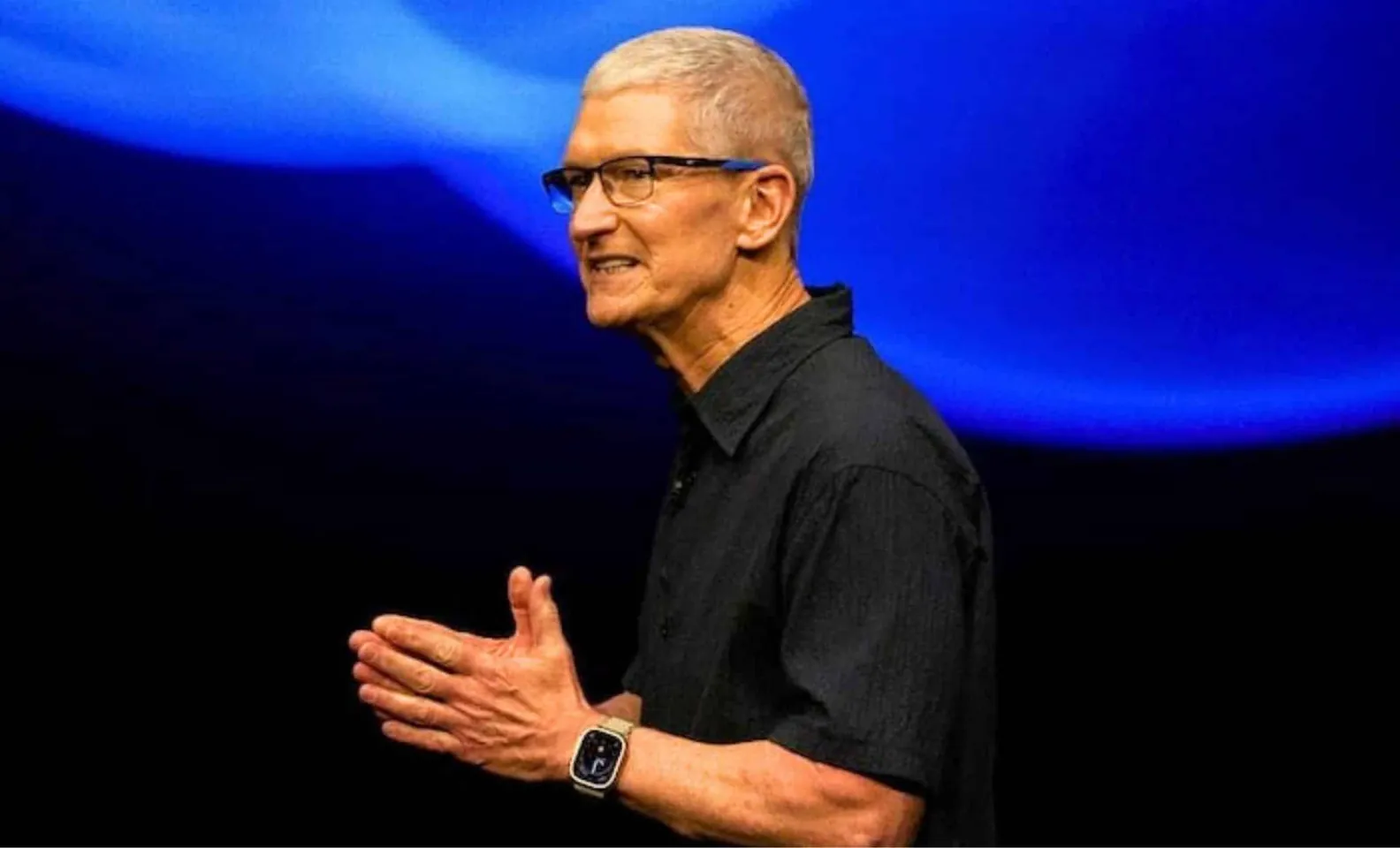For years, astronomers have predicted a dramatic fate for our galaxy: a head-on collision with Andromeda, our nearest large galactic neighbour.
The idea that the Milky Way and Andromeda are on a collision course goes back more than a century.
Earlier studies often assumed Andromeda’s transverse motion was small, making a future head-on collision seem almost certain.
M33 nudges Andromeda slightly toward the Milky Way, increasing the chance of a merger.
Meanwhile, the Large Magellanic Cloud shifts the Milky Way’s motion away from Andromeda, reducing the likelihood of a collision.
Astronomers have been predicting for years that our galaxy would meet its nearest large galactic neighbor, Andromeda, head-on in a catastrophic collision. Astronomy documentaries, textbooks, and popular science writing now frequently discuss this merger, which is predicted to occur in roughly five billion years.
The future of the Milky Way, however, may not be as clear-cut as previously thought, according to a recent study led by Till Sawala of the University of Helsinki and published in Nature Astronomy.
After taking into consideration the gravitational pull of other nearby galaxies and carefully adjusting for measurement uncertainties, we discovered that the likelihood of the Milky Way and Andromeda merging within the next 10 billion years is only roughly 50%.
We believed a collision was inevitable, but why?
For over a century, people have believed that Andromeda and the Milky Way are headed for collision. By measuring Andromeda’s radial velocity, or motion along our line of sight, using a tiny change in the color of its light known as the Doppler shift, astronomers were able to determine that it is approaching us.
However, galaxies can also move sideways across the sky, a phenomenon called transverse velocity or proper motion. Detecting this sideways motion is extremely challenging, particularly for galaxies that are millions of light years away.
Because Andromeda’s transverse motion was frequently assumed to be small in earlier studies, a future head-on collision seemed all but certain.
What makes this study unique?
There was no new data for our study. Instead, we reexamined previously published observations from the Gaia mission and the Hubble Space Telescope.
In contrast to previous studies, our work does not assume the most likely values of these measurements, but instead takes into account their uncertainty.
With minor adjustments to the presumptive initial conditions, such as the two galaxies’ positions and speeds, we were able to simulate thousands of potential trajectories for the Milky Way and Andromeda.
We obtained the same findings when we began with the same presumptions as the previous studies. But we also had the chance to investigate a wider range of options.
We also included two other galaxies that affect the Milky Way and Andromeda’s future paths: M33, also called the Triangulum Galaxy, which orbits Andromeda, and the Large Magellanic Cloud, a massive satellite galaxy that is currently falling into the Milky Way.
The gravitational pull of these companion galaxies alters the host’s motions.
A merger is more likely when M33 pushes Andromeda a little closer to the Milky Way. To lessen the chance of a collision, the Milky Way’s motion is shifted away from Andromeda by the Large Magellanic Cloud.
Considering all of this, we discovered that the Milky Way and Andromeda do not merge at all during the next 10 billion years in roughly half of the simulated scenarios.
What would happen if they collided or didn’t?
A merger is unlikely to have disastrous effects on Earth, even if it does occur. Direct collisions are uncommon because stars in galaxies are separated by vast distances.
But eventually, the galaxies would come together due to gravity to form a single, bigger galaxy, most likely an elliptical one instead of the spirals we see today.
The galaxies may form a long, slow orbit around one another if they don’t merge; they will be close companions that never really collide. Even though the result is kinder, it nevertheless changes how we perceive the Milky Way’s far-off future.
What will happen next?
This uncertainty is greatest for Andromeda’s transverse velocity. The distinction between a merger and a near-miss can be made by even minor adjustments to this sideways motion. This value will be improved and we will get closer to a more precise response with the aid of future measurements.
As of yet, we have no firm answer regarding the future of our own galaxy. Even in our own neighborhood, however, investigating these possibilities demonstrates how much we still don’t know about the cosmos.







